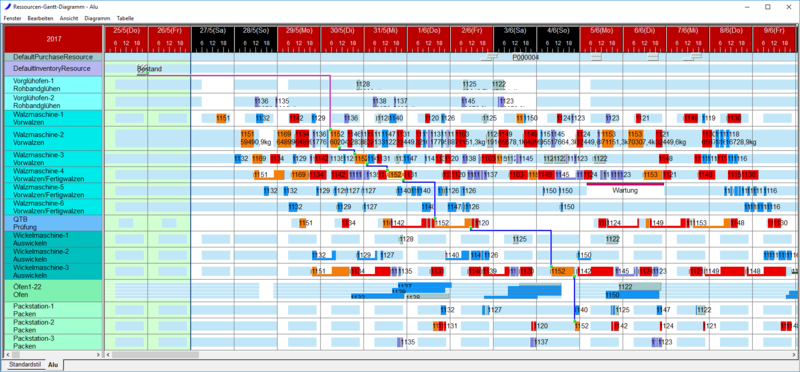MECHANICAL, ELECTRICAL AND METAL
REDUCED LEAD TIMES AND BOOSTED ON-TIME DELIVERY PERFORMANCE
PRODUCTION SETUP FINE-TUNING THROUGH OPTIMAL ORDER SEQUENCING
Mechanical, Electrical and Metal are manufactured unit by unit; the final product can weigh up to several hundred tons. Complicated and intricate construction, many purchase parts with long replenishment long and short lead times, and thousands of hours of handwork need to be considered in scheduling.
Very common that many finished goods are deliver at same time, so an advanced grouping method and rules are mandatory.
Production processes in metal production range from a wire number of processes. A major challenge is synchronizing make-to-order processes with batch production processes.
Most of them are producing while process of design continue (concurrent engineering), Scheduling flexibility is crucial to deliver all finished items on time.
Wrapping, Packaging and shipping should be months duration
Production process, such as yield factors, safety stocks, or over-planning quantities (supermarkets) are very import to consider on planning and scheduling process.
Typical planning and scheduling challenges that and APS help to fix in mechanical electrical and metal industry are:
- Consideration of Various Item Specifications and Resource Capabilities
- Consideration of Alternative Routes
- Synchronization of a big number of process
- Preferred Routes and Resources
- Improved Flexibility
- Consideration of Limited Oven Capacity
- Consideration of Material Availability
- Just-In-Time Provision of Cores and Various Coils at Assembly Date
- Consideration of Process-Related Transitional Periods
- Consideration of Various Testing Methods
- Bottleneck-Oriented Planning
- Minimal Production Lead Times and WIP inventories
- Optimal Lot Sizes
- Worker Scheduling
- Optimal Furnace Loading
- Shorter Delivery Times
- Improved Delivery Reliability
- Wholistic Process Synchronization through Optimal, Sequential Scheduling
- Drastically Shortened Lead Times through Bottleneck-Oriented Planning
- Massive Reduction in Intermediate Parts
- Increased Resource Efficiency
- Improved Transparency in Factory and Order Status
- Greater Flexibility in Case of Order Changes, Rush Orders, Machine Failure, etc.
- Complete Synchronization of All Processes through Optimal, Sequential Scheduling under Consideration of all Restrictions

